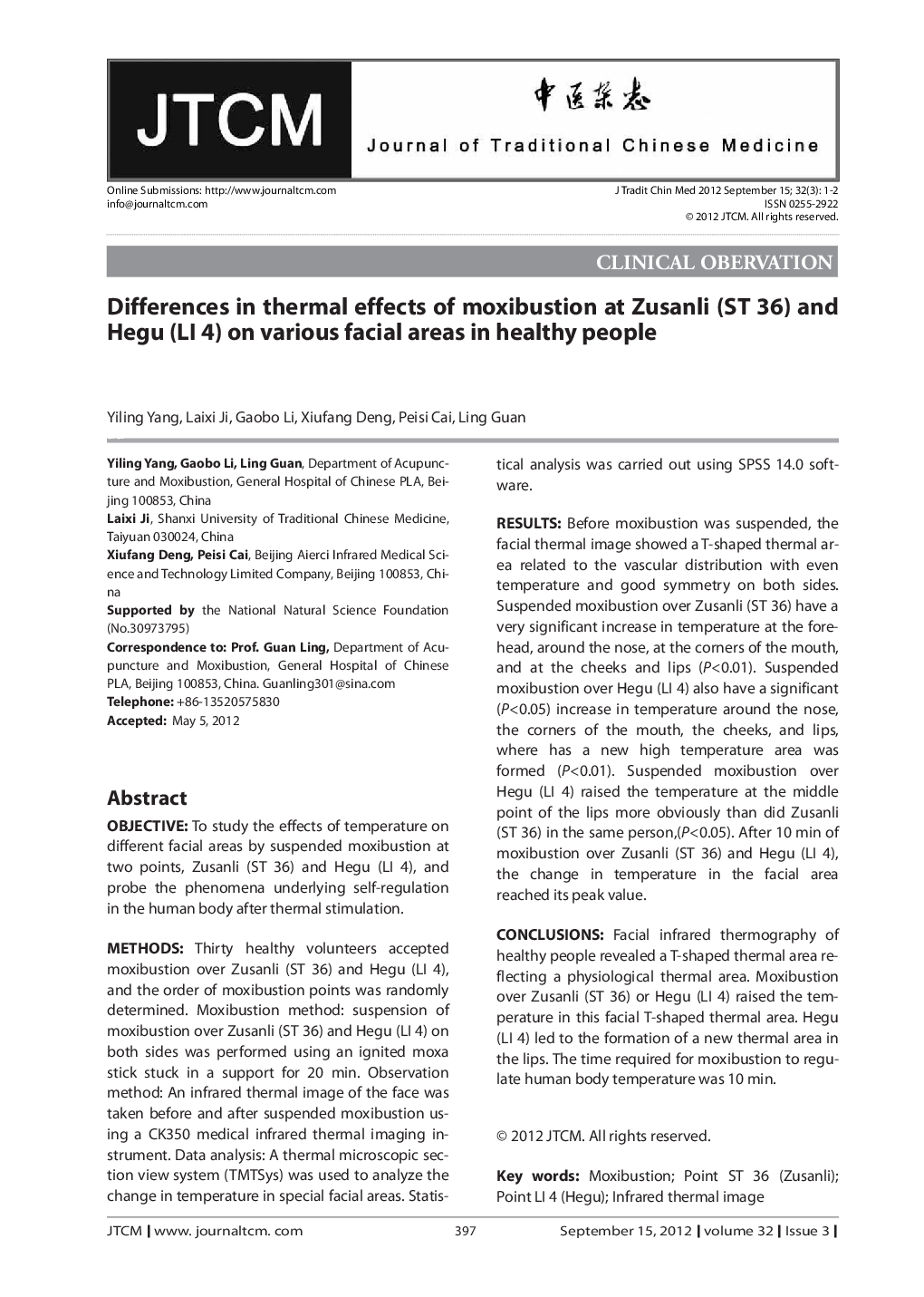| Article ID | Journal | Published Year | Pages | File Type |
|---|---|---|---|---|
| 4200978 | Journal of Traditional Chinese Medicine | 2012 | 7 Pages |
ObjectiveTo study the effects of temperature on different facial areas by suspended moxibustion at two points, Zusanli (ST 36) and Hegu (LI 4), and probe the phenomena underlying self-regulation in the human body after thermal stimulation.MethodsThirty healthy volunteers accepted moxibustion over Zusanli (ST 36) and Hegu (LI 4), and the order of moxibustion points was randomly determined. Moxibustion method: suspension of moxibustion over Zusanli (ST 36) and Hegu (LI 4) on both sides was performed using an ignited moxa stick stuck in a support for 20 min. Observation method: An infrared thermal image of the face was taken before and after suspended moxibustion using a CK350 medical infrared thermal imaging instrument. Data analysis: A thermal microscopic section view system (TMTSys) was used to analyze the change in temperature in special facial areas. Statistical analysis was carried out using SPSS 14.0 software.ResultsBefore moxibustion was suspended, the facial thermal image showed a T-shaped thermal area related to the vascular distribution with even temperature and good symmetry on both sides. Suspended moxibustion over Zusanli (ST 36) have a very significant increase in temperature at the forehead, around the nose, at the corners of the mouth, and at the cheeks and lips (P<0.01). Suspended moxibustion over Hegu (LI 4) also have a significant (P<0.05) increase in temperature around the nose, the corners of the mouth, the cheeks, and lips, where has a new high temperature area was formed (P<0.01). Suspended moxibustion over Hegu (LI 4) raised the temperature at the middle point of the lips more obviously than did Zusanli (ST 36) in the same person,(P<0.05). After 10 min of moxibustion over Zusanli (ST 36) and Hegu (LI 4), the change in temperature in the facial area reached its peak value.ConclusionFacial infrared thermography of healthy people revealed a T-shaped thermal area reflecting a physiological thermal area. Moxibustion over Zusanli (ST 36) or Hegu (LI 4) raised the temperature in this facial T-shaped thermal area. Hegu (LI 4) led to the formation of a new thermal area in the lips. The time required for moxibustion to regulate human body temperature was 10 min.
